Geopark Municipalities
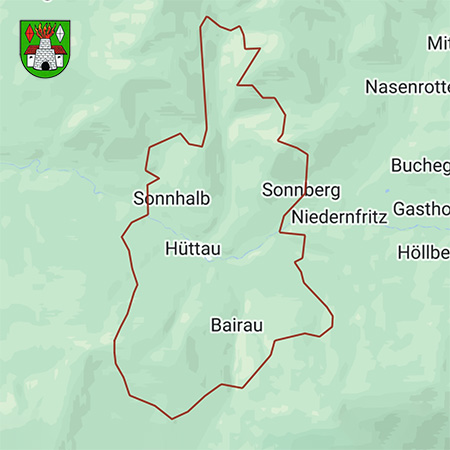
Municipality of Hüttau

First mentioned in a document in 1325, the town was characterised by mining and smelting works from the 16th to 19th centuries. Today, this small community in the Fritztal valley is an attraction for visitors and mining enthusiasts. Hüttau is home to the Larzenbach show mine and the "Ores, Gold and Minerals" museum.
Information from the Tourism Board -Hüttau
Information from the municipality of Hüttau
Mining in Hüttau
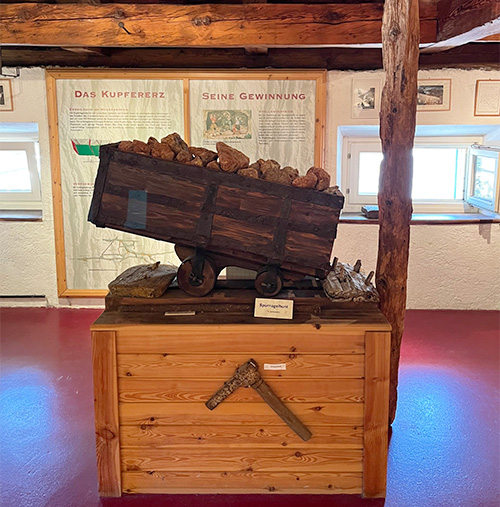
The name Hüttau is derived from the former smelting works in this region. In the first half of the 10th century, Salzburg Archbishop Pilgrim I sent a priest to the village, from which can be dated back that settlement began around this time. A copper smelting plant is mentioned in the annals around the year 1515. The copper mine next to the Larzenbach probably dates back to the 13th/14th century. It is first mentioned in documents in 1549. The copper pyrite extracted, containing approx. 151TP3 tonnes of copper, was processed in the "Ernst Hütte" near Niedernfritz. Records from the middle of the 16th century report around 150 employees in the Hüttau mining and smelting plant. This period also corresponded to the heyday of mining while the end was already approaching.
The Larzenbach copper mine was founded in 1853. Ten miners were employed to mine the ore in the Barbara mine field and in the poke works and washing screens. The ore concentrates were delivered to the Lend smelting plant until the end of mining in 1869. The building, which houses the municipality office, tourism board and the mineralogical museum "Ores, Gold and Minerals", was built in 1594 and served as the manor house of the last tradesmen (Feuersenger). The exhibition comprises of around 4,000 exhibits. In addition to a variety of ores from the Salzburg mines, the largest gold discovery in the Eastern Alps can be seen here. Of course, the most beautiful exhibits from the Larzenbach show mine are also on display.

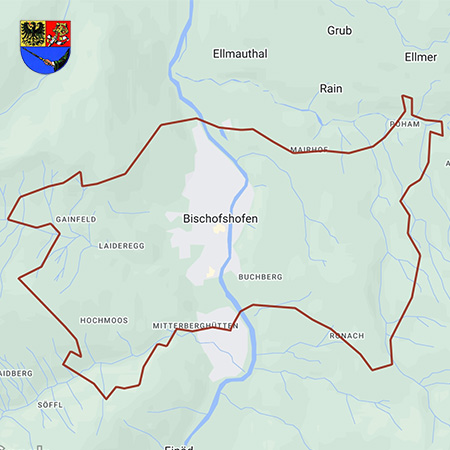
Municipality of Bischofshofen

Bischofshofen is located approx. 50 kilometres south of the Mozart city of Salzburg in the Pongau region. The history of the area dates back around 5,000 years. Today it is a modern holiday and sports town, where guests and athletes from all over the world meet every year for the Four Hill ski jump tournament on the Paul Ausserleitner ski jump. The visitor centre of the Ore of the Alps UNESCO Global Geopark is located in Bischofshofen in the ski jump area.
Information from the Tourism Board -Bischofshofen
Information from the municipality of Bischofshofen
Mining in Bischofshofen
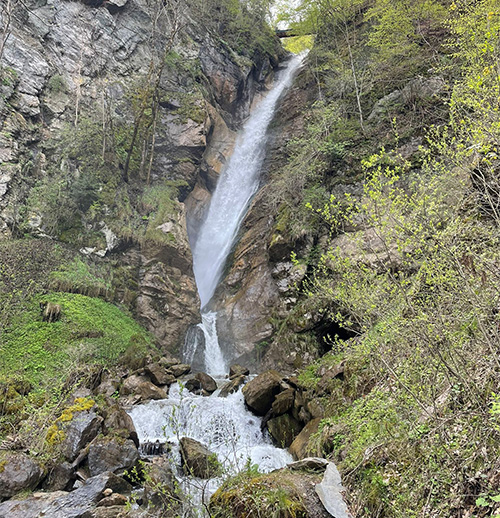
The municipality of Bischofshofen is often referred to in the annals as the "cradle of the Pongau". The first traces of human activity date back to the 6th millennium BC. Since this time, today's municipal area has been an important settlement, mining and trading location as well as a cultural centre. The development of the region was decisively characterised by the mining of copper ores. With the rediscovery of the Mitterberg copper deposit in Mühlbach am Hochkönig and the start of mining in 1829, the smelter, which had been located in the narrow Mühlbach valley for almost 40 years, was moved to Außerfelden in Bischofshofen in 1885. Today's Mitterberghütten was the site of the smelting of copper ore from Mühlbach from 1887 to 1931.
The global economic crisis in the 1920s meant the end of the copper smelting as one of the most important employers in the region. One of the oldest settlements in the Eastern Alps (5000 to 2200 BC) with evidence of copper processing has been found on the Götschenberg. This site is popularly known as the "red rock" due to its striking iron oxide colouring. The copper ore had to be broken down to the size of a hazelnut on base plates using tapping and grinding stones or mallets. These lumps of ore were ground to the size of sand using grating stones and then heated in "roasting beds". The copper ingots were sold throughout Europe in the form of clasps and half-rings.

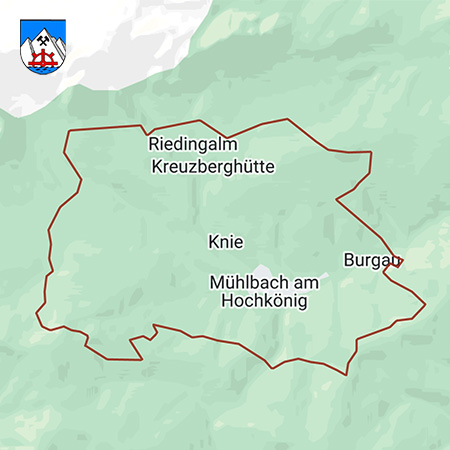
Municipality of Mühlbach am Hochkönig

The mountain village of Mühlbach am Hochkönig can look back on over 4,000 years of copper mining history. It was shaped by copper mining until 1977 and evidence of this history can still be found today, for example in the mining museum with its show mine. Today, Mühlbach is a family-friendly holiday town all year round. In Mühlbach am Hochkönig, you can take part in a guided tour of the Johanna show mine and visit the mining museum in the old miners' home.
Information from the Tourism Board-Mühlbach
Information from the municipality of Mühlbach
Mining in Mühlbach
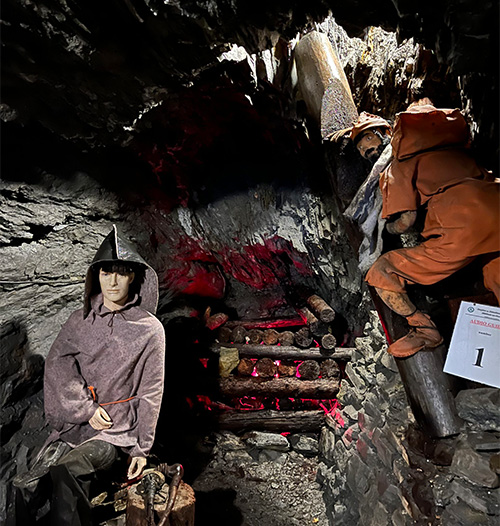
The first documented mention of the village of Mühlbach as "Mulpach" dates back to 1350. Under Salzburg's Archbishop Leonhard von Keutschach, the construction of the Sebastian Chapel began in 1519. Today, Mühlbach has an internationally recognised position as a millennia-old centre of copper mining in Europe. Traces and finds indicate that Mühlbach is a 1700-year-old prehistoric industrial centre that reached its heyday in the period from 2,000 to 300 BC. Slag dating back 4,000 years can be found at over 190 documented smelting sites. For around 2,000 years, the old mining industry of the Mühlbach's Mitterberg remained hidden from the public.
After an accidental discovery by a farmer, the "Mitterberger Kupferwerkschaft" was founded on the 25th of November 1829 by Josef Zötl, the royal and imperial head miner of this time from the Pillersee ironworks in Tyrol, with 51 donors. The first mine, the Mariahilf Mine on the Roßbach, was opened in the same year. This ore mine developed into one of the largest copper mines in Central Europe. The sudden decline in the price of copper on the world market led to the closure of the copper mine in Mühlbach am Hochkönig on 30 June 1977. Today, the mining museum and the show mine bear witness to a mining history that dates back 4,000 years.

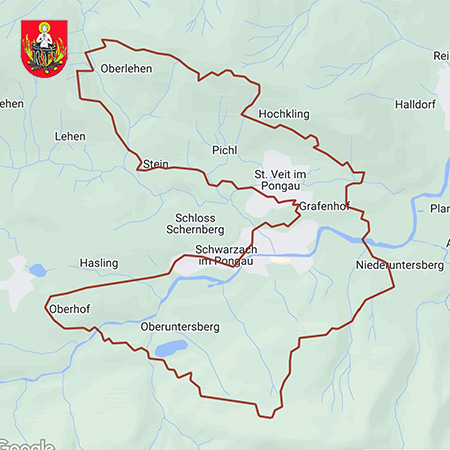
Municipality of St. Veit

The first settlement in what is now the municipality dates back to the early Bronze Age (2,000-1,500 BC). Today's municipality lies 763 metres above sea level above the Salzach Valley and is known as the "sun terrace". Its special feature is the healing climate, the beneficial effects of which were already recognised in the time of Emperor Franz Josef. A lung sanatorium was built here. This tradition has been revitalised with the themes of relaxation and regeneration. St. Veit im Pongau is home to the Sunnpau show mine and the associated Seelacken Museum.
Information from the Tourism Board -St. Veit
Information from the municipality of St. Veit
Mining in St. Veit
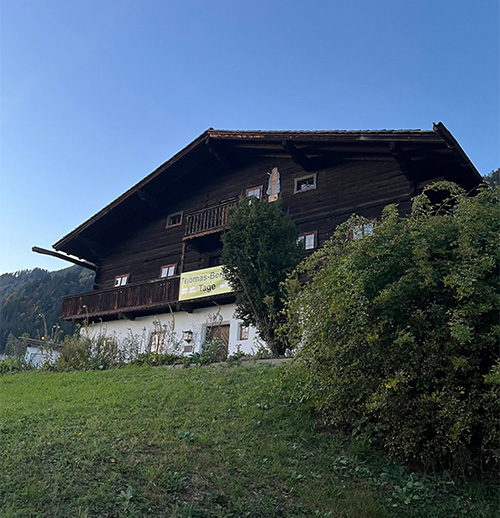
The first written mention of St. Veit and the parish was in a letter of donation from Salzburg's Archbishop Gebhard in 1074. From St. Veit as the "original and mother parish", priests went to Goldegg, St. Johann im Pongau, Dienten and the Gastein and Grossarl valleys as early as 910. Under Archbishop Firmian in 1831/32, 3,200 Protestant Christians from the St. Veit/Goldegg court, including many miners, were forced to leave the country because of their faith. They celebrated their last church service in their homeland at the Pfarriachstein chapel ("Fadlstoa Kapelle"), which still exists today. The Klingelberg was already home to a mining settlement at the turn of the Neolithic and Copper Age. Sunnpau copper was used to make tools, weapons and crockery 4,000 years ago. In the Bronze Age (2,000 to 1,300 BC), copper was needed to produce the shiny golden metal bronze.
In the Middle Ages, copper mining was resumed in St. Veit im Pongau after an interruption of several thousand years. The mining operation comprised 19 pits. In 1543, around 50 tonnes of ore were mined, most of which was delivered to the gold smelter in Lend as an additional product. In the second half of the 16th century, production at the St. Veit mine declined. This was due on the one hand to the drying up of the ore veins and on the other to the unmanageable water pressure in the deeper parts of the mine - which had already led to the closure of some pits in 1545. Sunnpau was closed around 1875. Since 2006, the prehistoric Sunnpau show mine has attracted thousands of visitors every year as a fascinating show mine.
